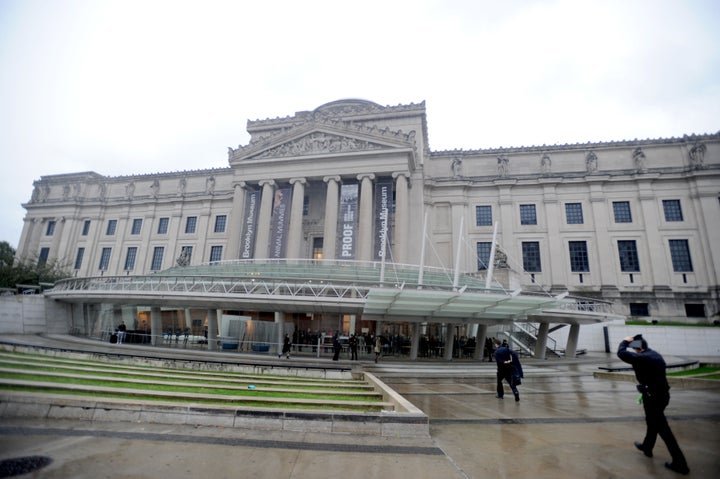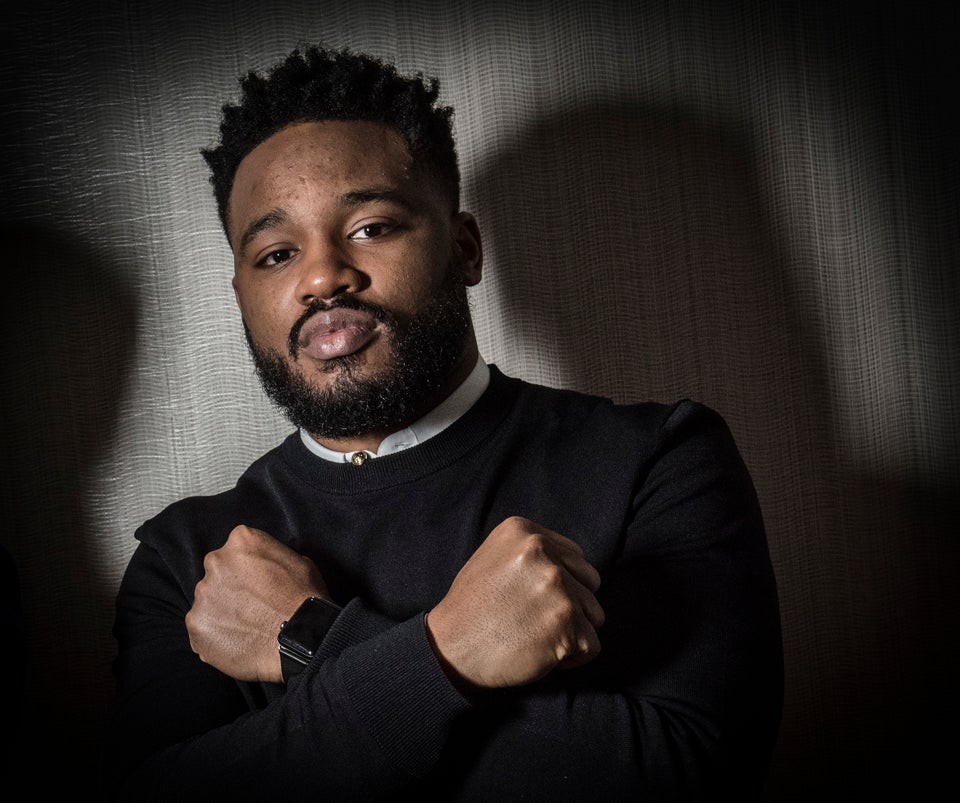
The Brooklyn Museum is having a “Black Panther” moment.
The museum announced on Monday that it had appointed two new curators: Drew Sawyer for photography, and Kristen Windmuller-Luna, who will manage the museum’s African art collections.
People are not happy that both curators, but particularly Windmuller-Luna, are white.
Most critics of the choice, including scholars who work in the field of art history, wondered why the museum couldn’t find a qualified black candidate as a curator of African art. Some said the hire highlighted a general lack of diversity in the arts, while others suggested the hires were just another sign of Brooklyn’s gentrification.
Meanwhile, other Twitter users are comparing the hire to the museum heist scene from the hit film “Black Panther.” The scene begins with antagonist Erik “Killmonger” Stevens browsing through a museum while security watches closely over him. A white female curator eventually approaches Killmonger and gives him the history of the West African artifacts he’s looking at.
When Killmonger tells her that one of the artifacts actually originated from the fictional Wakanda and was stolen by British soldiers, the curator looks surprised.
“How do you think your ancestors got these,” Killmonger asks the woman, after saying he would take the artifact. “Do you think they paid a fair price? Or did they take it, like they took everything else?”
“We as museum professionals need to talk about the inclusion of this scene,” writes Casey Haughin, a Johns Hopkins University art student and editor of The Hopkins Exhibitionist, in an op-ed that went viral in February.
“The museum is presented as an illegal mechanism of colonialism, and along with that, a space which does not even welcome those whose culture it displays,” she continued.
That scene from the fictional Marvel film, and now the Brooklyn Museum’s latest hire, illustrate the very real lack of diversity in the art world.
African-Americans made up a mere 4 percent of all curators, conservators, educators and museum leaders, while Hispanics made up 3 percent and Asians made up 6 percent, according to a widespread museum demographic survey completed by the Andrew W. Mellon Foundation in 2015. White scholars occupied those roles at overwhelming rates, while people of color were more represented at museums through janitorial or security roles.
“Art history, generally, has not always attracted people of color or first-generation students,” Chika Okeke-Agulu, a professor of African art at Princeton University, told HuffPost in an email.
“And there is still not enough black and African students in US institutions interested in studying and making a career in ancestral arts of African societies, the sort of art that still form the core of African art collections of museums like Brooklyn.”
But Okeke-Agulu, whom Windmuller-Luna studied under while earning her Ph.D., does not think that museums should only hire black curators to oversee African exhibits.
“Do I think that museums should only hire black curators to oversee their African art collections? Absolutely not; or we might as well prevent non-black students from studying or seeking a career in the field,” he said.
“Should museums make sure that they don’t overlook qualified black curators in their curatorial and senior management job search process? Absolutely.”
“African-Americans made up a mere 4 percent of all curators, conservators, educators and museum leaders.”
Mariët Westermann, vice president of the Andrew W. Mellon Foundation, noted in the summary for the foundation’s 2015 survey that underrepresentation of people of color is a well-known phenomenon within museum circles.
That’s partly why art scholars of color are angry over the Brooklyn Museum’s hire.
“These are fraught issues, and the curator in question is a highly qualified scholar poised to do great work,” Ananda Cohen-Aponte, an art historian who teaches at Cornell University, wrote on Twitter.
“But we’re in a complex cultural moment where institutions are being held accountable in unprecedented ways, [especially with] social media bringing many more into the [conversation].”
While people are criticizing the museum of hiring Windmuller-Luna, Okeke-Agulu thinks that the Brooklyn Museum has done a fair job of encouraging a diverse staff ― especially considering the art world’s general elitism.
“The art world ― as constituted by scholars, curators, critics, collectors, dealers, schools, museums, and art administrators ― has always been elitist, and that won’t be changing anytime soon, largely because of the long-established entanglement of art, money and power,” he told HuffPost, adding that the diversity of “any given society’s elite class has direct bearing [on] the diversity of its art world.”
“Still, some museums have done more in diversifying its curatorial staff than others,” Okeke-Agulu added. “And I think that Brooklyn has been much more active in this respect than many of its peers in New York and elsewhere in the US. Take a look at its curatorial staff.”
In a statement to HuffPost on April 6, a week after this story was first published, Brooklyn Museum director Anne Pasternak said the museum “unequivocally stands by” its decision to hire Windmuller-Luna.
“We were deeply dismayed when the conversation about this appointment turned to personal attacks on this individual,” Pasternak said. “Many respected scholars in the field have expressed the same sentiment.”
Pasternak cited Nigerian-American arts leader Okwui Enwezor as a scholar who is disappointed in the backlash against Windmuller-Luna, his former student.
“The criticism around her appointment can be described as arbitrary at best, and chilling at worst,” Pasternak quoted Enwezor as saying.
According to Pasternak, a museum committee made up of members from several departments completed a yearlong search to fill the position of African art curator and “unanimously selected” Windmuller-Luna due to her expertise and experience.
According to several biographies of her published by universities and museums, she has received her Ph.D. in African Art History from Princeton University, worked as an African Arts research specialist at Princeton’s art museum, and is a lecturer at Columbia University.
While Brooklyn Museum supports Windmuller-Luna’s hiring, Pasternak said the museum is aware that the “longstanding and pervasive issues of structural racism profoundly affect the lives of people of color.”
“It is right to press museums and other institutions to diversify their leadership,” she added.
To be sure, Windmuller-Luna is qualified for her new job. But the question many people are asking is whether there was an art scholar of color suitable for the role, too. And, in case the museum couldn’t find one, Cohen-Aponte has started a #POCarthistory Twitter thread filled with exceptionally qualified candidates.
This story has been updated with comment from Chika Okeke-Agulu and an April 6 statement from the Brooklyn Museum.

